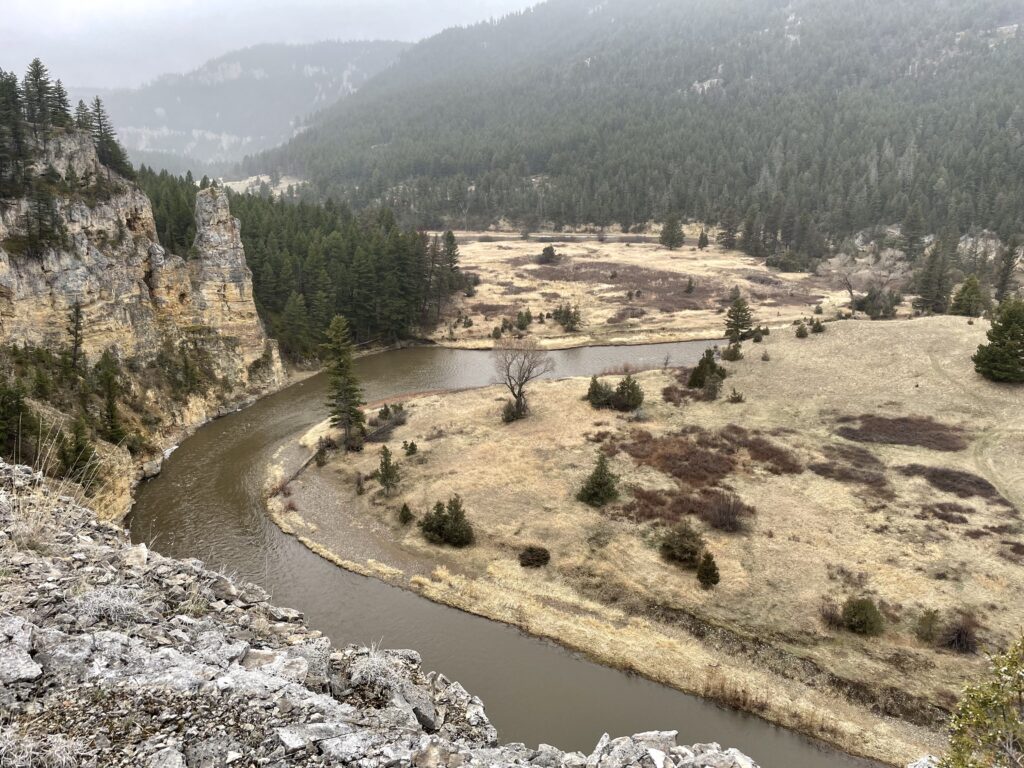
Guest blogger Tess McEnroe is a river conservationist with Idaho Rivers United and shares her recent experiences on Montana’s Smith River.
Taking a Smith River trip in early April is a rite of passage for river runners in Big Sky Country. Our recent trip was just the ninth launch of 2024, kicking off the season with typical Montana spring weather – a slice of teaser sun followed by two solid days of rain and snow, blanketing the canyon and our rafts with three inches of snow and soaking us to the bone for nearly 60 miles.
We had heard other stories about early season Smith trips being “stuck at a camp for five days because the river froze over,” or “having to break into a nearby home to warm the kids up.” But as with any good river trip, you laugh, snack, shiver, and imbibe through the frozen feet together. It’s “type two fun” and we would do it again in a minute. We paddle for preservation, just as anglers can cast for conservation, and by doing so we are actively connecting to the natural world while protecting these important wild places for now and future generations.
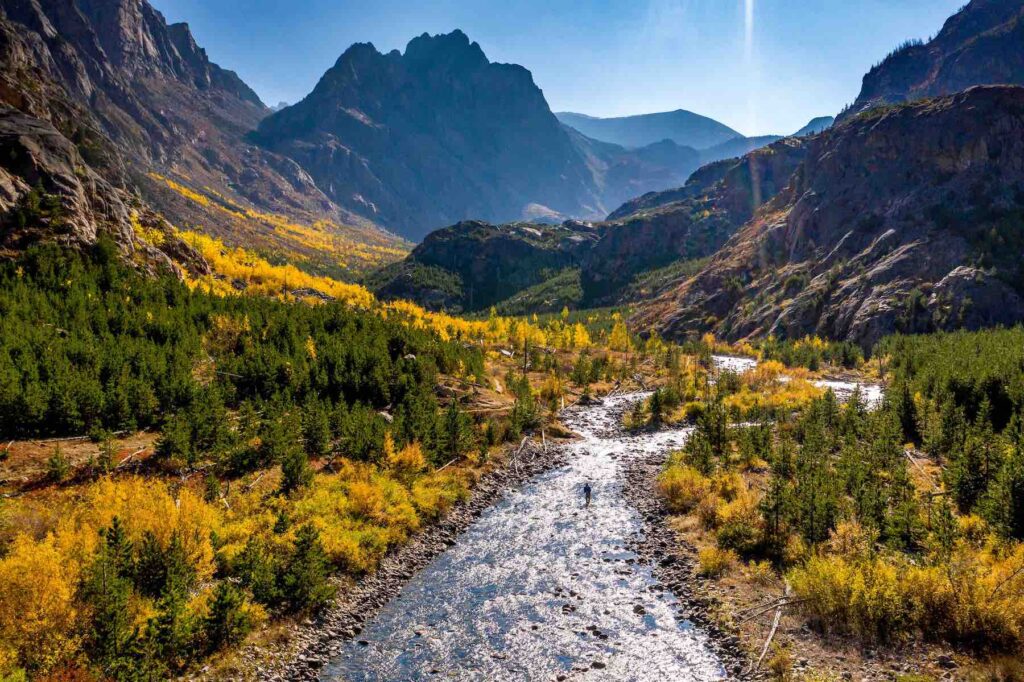
Let's Stay in Touch!
We’re hard at work in the Northern Rockies for rivers and clean water. Sign up to get the most important news affecting your water and rivers delivered right to your inbox.
The Smith River is threatened by the Black Butte Copper Mine, which is being built about 17 miles up Sheep Creek. Sheep Creek is a clear-flowing trout spawning tributary that flows into the Smith at the Camp Baker boat launch, which is about a half hour drive from the small ranching community of White Sulphur Springs.
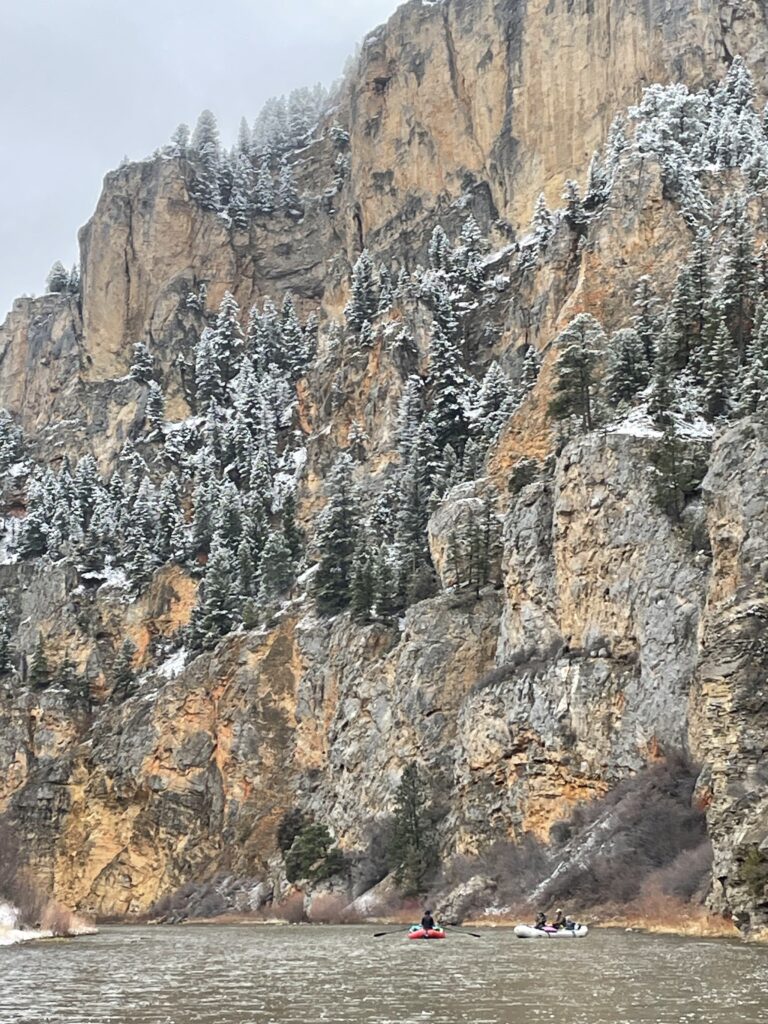
According to Earthjustice, the copper mine would produce nearly 13 million tons of acid-generating waste, threatening water quality and trout populations in Sheep Creek, the Smith River, and eventually the Missouri River, into which the Smith flows. Not only does the Black Butte Mine threaten a world-class wild trout fishery, but the Smith River canyon also has irreplaceable cultural value in the form of over 70 Native American pictograph sites hidden amongst its limestone walls and caves.
The Black Butte Copper Mine was temporarily stopped in April 2022 when a state district court judge ruled in favor of American Rivers and its co-plaintiffs, who argued the Montana Department of Environmental Quality (DEQ) failed to conduct a thorough enough environmental analysis. But last February, the Montana Supreme Court overturned that decision, reinstating the operating permit for the mine.
The battle is not over, however. The mining company still needs to survive another court challenge pertaining to the water rights the mine needs to operate. In late March, the Montana Supreme Court heard oral arguments in that case, and it is expected to issue a ruling by November. In the meantime, conservation groups are urging the Bureau of Land Management and Forest Service to implement a 20-year administrative mineral withdrawal on public lands in the Smith River watershed to ensure that any mining that occurs at the Black Butte Mine doesn’t spread onto the adjacent Helena – Lewis and Clark National Forest.
Another important way to protect the Smith River is through passage of the Montana Headwaters Legacy Act, sponsored by US Senator Jon Tester (D-MT). The MHLA would safeguard 384 miles of Montana’s most prized rivers as Wild and Scenic – including the Smith River and Tenderfoot Creek, its most pristine tributary. This legislation would also protect 18 other waterways in the Greater Yellowstone area, including portions of the Gallatin, Madison, and Yellowstone rivers.
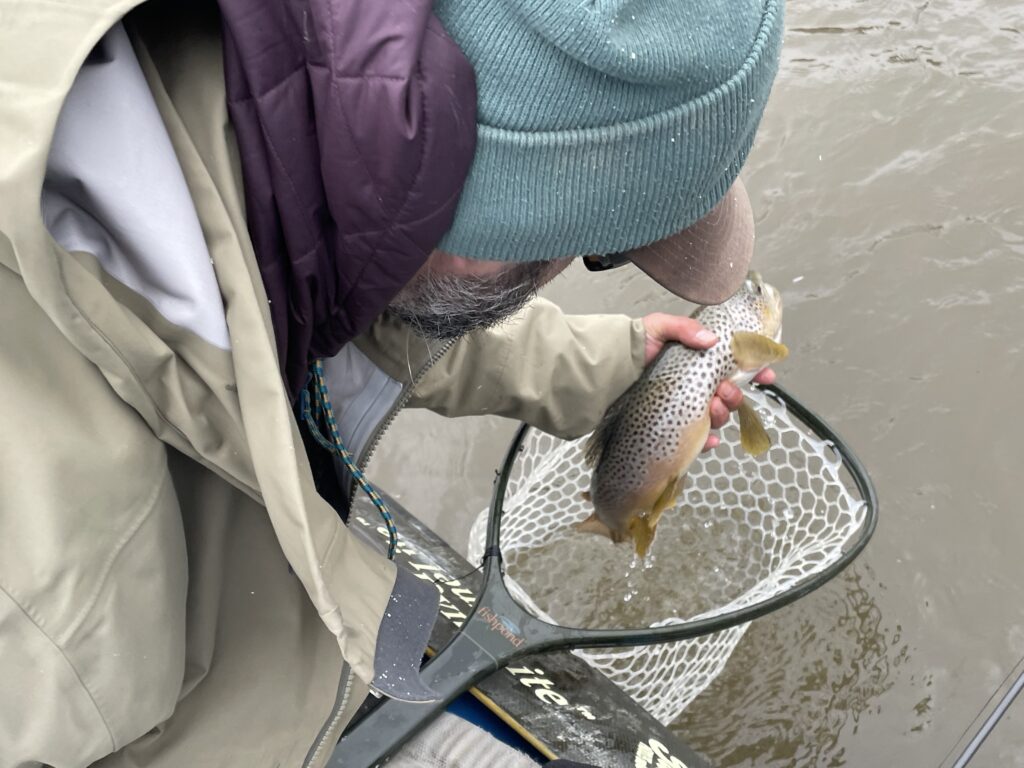
The Smith River clearly deserves to be designated as a Wild and Scenic River and protected in perpetuity. As the only permitted river in Montana, the Smith is unique. It possesses stunning scenery, abundant wildlife, and an exceptional wild trout fishery, which generates over $10 million annually for nearby rural communities. Passing the Montana Headwaters Legacy Act and implementing a mineral withdrawal in the Smith River headwaters are two critical steps needed to protect this remarkable river and preserve the opportunity for others to experience their own snow-covered sufferfest like the one I just endured.
Rivers connect landscapes and humanity – they are the lifeblood of Earth, the pulsing, freshwater arteries of the planet. After floating the Smith this spring, I have a much better understanding of why the Smith is one of our state’s most treasured rivers. Let’s keep it that way.
Tell Senator Daines to support the Montana Headwaters Legacy Act, and sign the Smith River mineral withdrawal petition.
Tess McEnroe is a river conservationist at Idaho Rivers United and has river guided across the west for 18 years. She lives in Missoula, MT along the Clark Fork River.
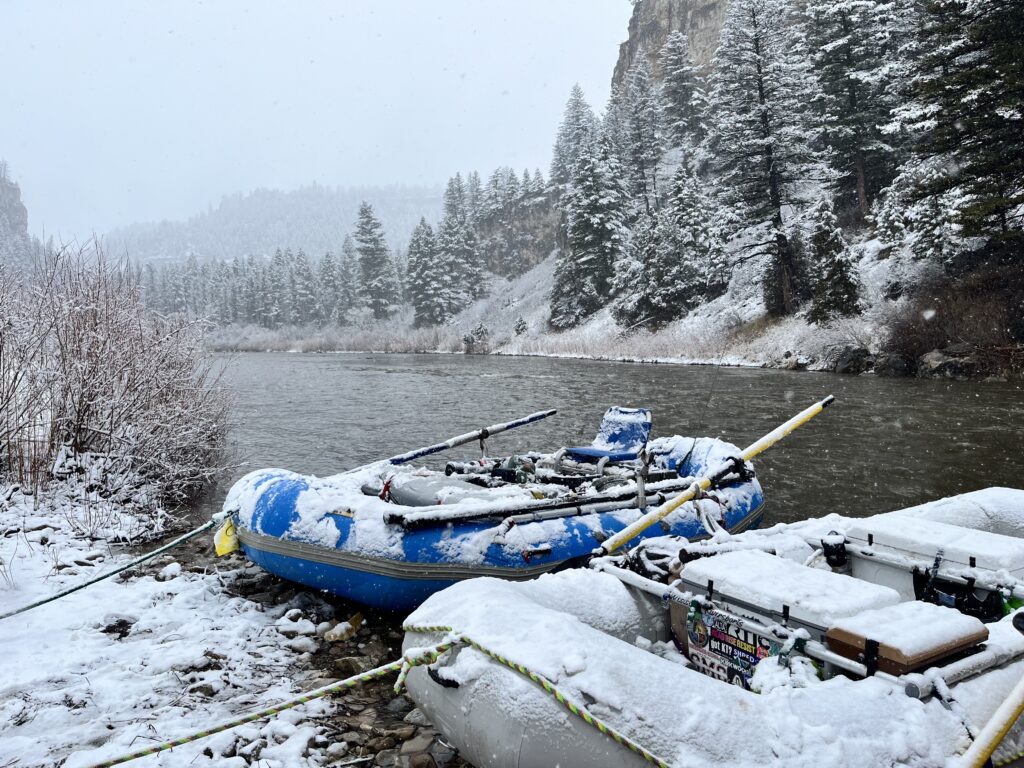
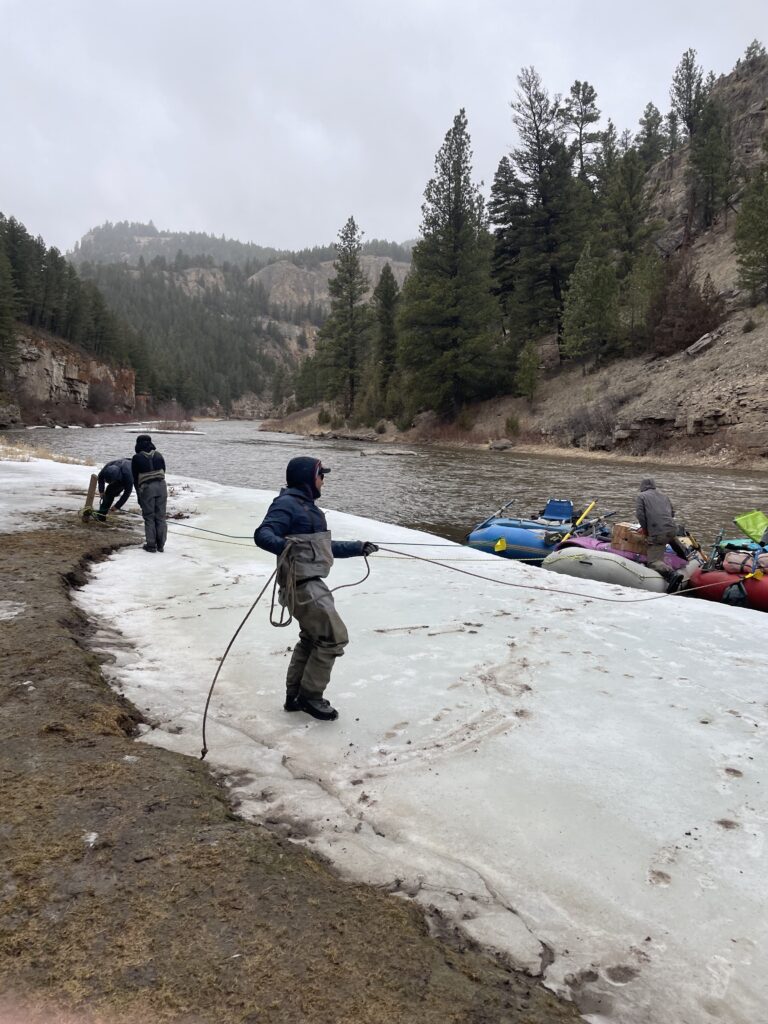
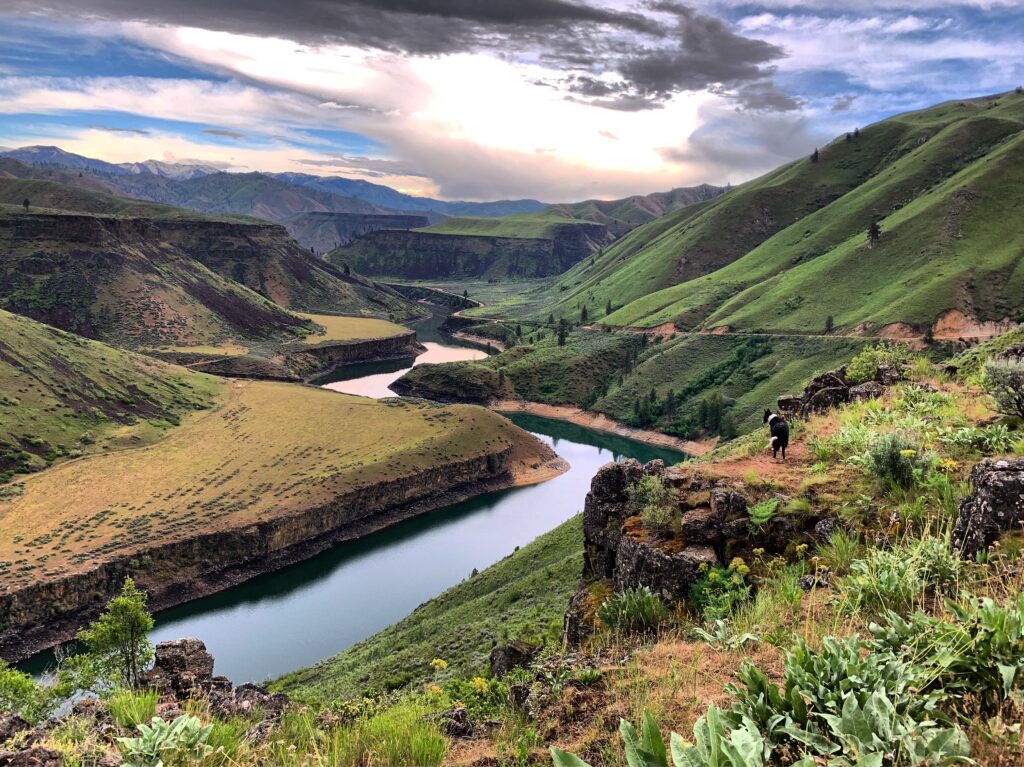
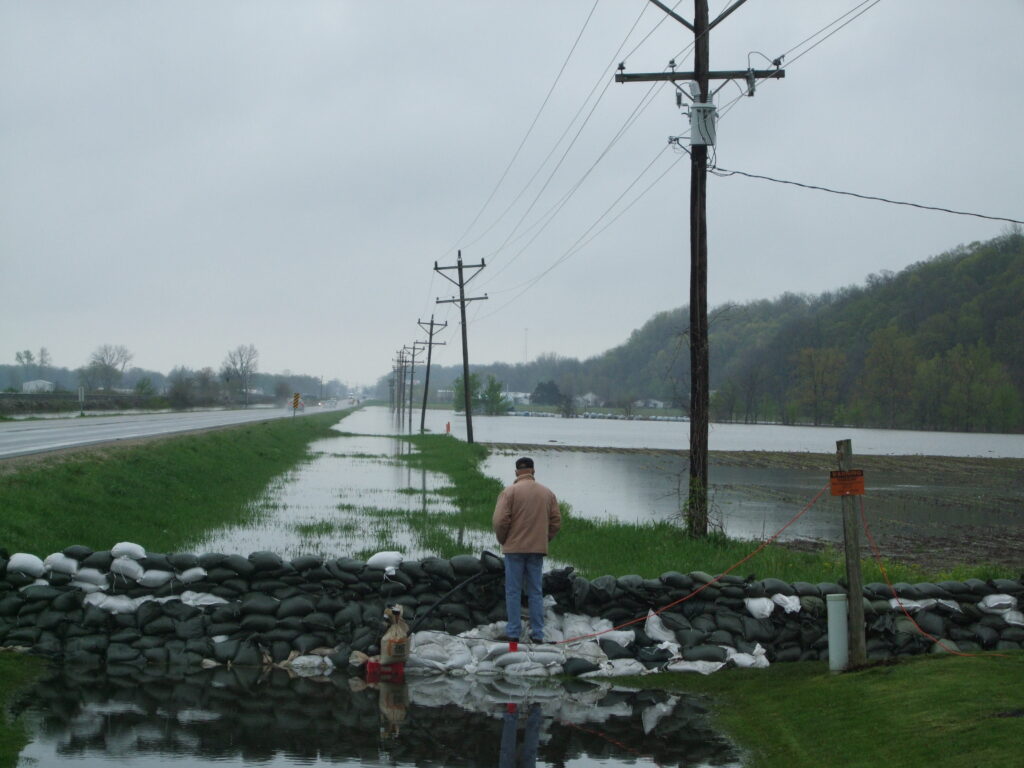
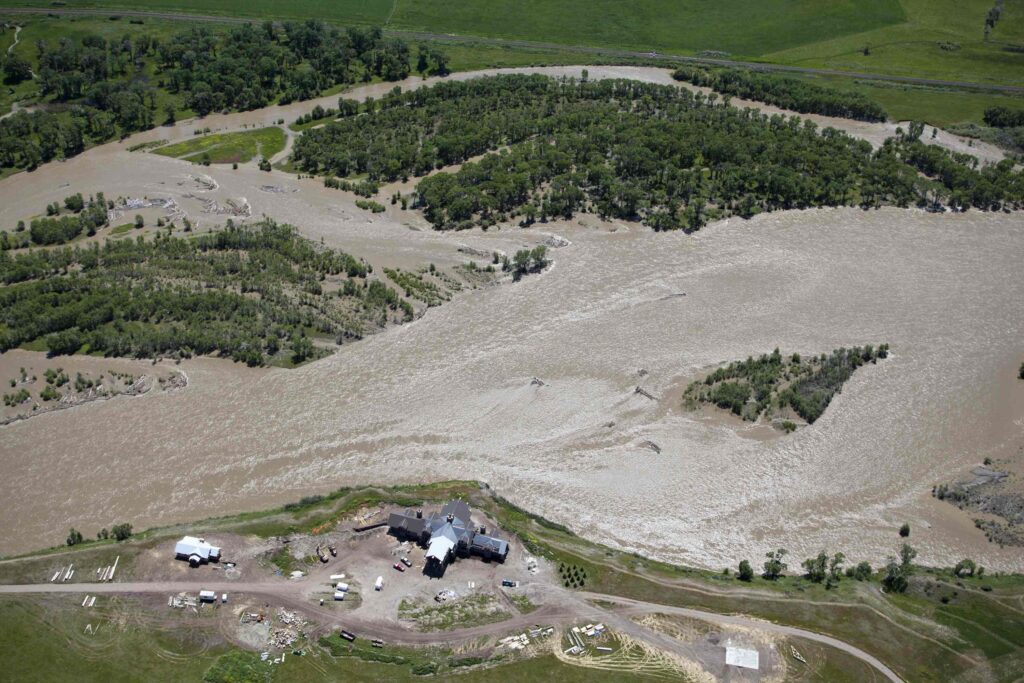
22 responses to “An Unforgettable Trip Down One of Montana’s Most Threatened Rivers”
I also did an early April trip down the Smith in 2005. A friend put the trip together saying, Mark the weather has been great. Warm but not hot. We’ll have a great time. 48 degrees when we put in on Monday, and it snowed Monday night and was blizzard conditions the rest of the week. We had to row in order to move downstream. At one point on Wed I was fishing and couldn’t figure why my fly line wouldn’t feed out. The I realized every one of the eyelets on my rod were completely frozen.
What a great trip.
I have done work for almost every gold mine in the state since the late 80s. Everyone was a disaster by the time they closed. Zortman, Golden Sunlight….the list goes on and on.
I understand the need for copper and other metals, but the Smith is just too important to risk.
PRESIDENT FRANKLIN ROOSEVELT SAID IT WELL: “WE HAVE NOTHING GREATER TO FEAR THAN FEAR ITSELF.” MONTANA’S MINING PRACTICES OF TODAY IN NO WAY REFLECT THE MINING PRACTICES OF YESTERDAY. BY THE SAME TOKEN, THE CITY OF HELENA WOULD PROBABLY NOT EXIST TODAY IF IT HADN’T BEEN FOR THE LURE OF GOLD AND THE ENTREPRENEURS THAT CREATED “THE QUEEN CITY OF THE ROCKIES”. I AM SURE THAT MEAGHER COUNTY (A STRUGGLING ECONOMY) WOULD LOVE TO HAVE THE “$10MILLION GENERATED BY THE SMITH RIVER.”
Have you been to Butte? Seen the Berkeley pit. Seen the future? ’nuff said…
So many uninformed commenter’s showing their ignorance by parroting NGO talking points that are flat lies. The real issue is that when the mine is built the NGO’s will not be able to raise money by claiming the sky is falling. 50 years from now when nothing happens to the river because of the mine people will wonder what all the fuss was about.
Look at the Butte Berekly pit mine in the middle of Butte. The water is green poison.
The mining company should be required to post a bond to cover all cleanup costs.
Better yet cancel the mine.
The mine is a natural divide away from sheep creek and the mine plan calls for encasing all solid material and treating all water. The Stillwater mine near Nye MT straddles the Stillwater river and has been operating since 1986 without degrading the river. It can be done.
It can be done, but will it? Corporate greed is appalling with the messes they leave behind after minin or drilling wells or fracking or coal mining, just to mention a few. Once they get their hands in there, they could care less about following legal guidelines. Their philosophy is make the maximum dollar for the minimal care and move to the next project and let them sue us to impose the proper cleanup of the mess they made. I have seen it happen for many years! True Story!!
There is no such animal as a “clean” mine, and copper extraction is especially toxic. Preserve one of the few unsullied river systems we have. Raping the land isn’t a God-given right.
If you stop the mining then river runners should pay 5000 to 10000$ per raft run. The rafts contribute to micro plastics that harm everything plant and animals.
As a property owner and fisherman in the Smith for 70 years I support reduction of irrigating wells that dewater the Smith, and any and all measures to protect it from becoming a mineral sewer.
HOORAY, there are some REAL navy seals amongst us.
Carpetbagger legislators will always lean into the interests of those who profit from the locals.
Say hello to Benowitz (George O) for me. He’s a brilliant defender of the environment !
Hello,
That is a nice article. The smith is truly a special stream! However, I think you have left out important details about the extreme precautions and extensive environmental plan that Black Butte Copper plans to implement while mining near Sheep Cr. First being the tailings is actually located in a separate watershed then the Sheep Cr. There are other details in the environmental plan that show they do care about mitigating any potential environmental problems. How are we supposed to electrify our world without mining for these critical minerals/metals? Best to create fair jobs in the US then get material from unfair work conditions!
All the best,
John
Get real
Name one mining project ever in history that delivered on the promise of no negative environmental consequences
This is in response to the commenter above who said it is essentially impossible to successfully reclaim mines. The Centralia Coal Mine which was a 20 square mile surface mine in western Washington State, was successfully reclaimed. The Sherwood Uranium Mine, 700 acres, was an open pit hard rock mine in eastern Washington State located on the Spokane Indian Reservation that bordered the Spokane Arm of Lake Roosevelt, was also successfully reclaimed. The lands on which this mine was located are now a designated tribal wildlife refuge on the Spokane Indian Reservation. This mine received the top Environmental Excellence Award for mine reclamation by the U.S. Department of Interior. This is the only mine in the U.S. to receive such an award.
They will pollute and kill Sheep Creek and then the Smith. No matter what promises they make they are empty. It ALWAYS ends that way.
Mines change the look of the land scape forever, once beautiful natural land formations are turned into huge pyramid looking rubble piles or huge deep ugle holes in the ground.
‘Separate watershed’ does not equal clean, unaffected water.
You need to do the Wright thing here quit ruining are beautiful resources and wildlife
Tell copper miner’s to mine copper in there own country. Way should they get rich off are beautiful land.
Thank you Tess. That river is truly a marvel- one that has to be protected as a Guidepost for conservation legislation not only in Montana’s waters but around the West. So much of access is privately owned-can Nature Conservancy make a purchase/claim on any of it?
I floatedthe Smith later in the year of 2008. Did it in a pontoon boat in one day. Legs so numb I had to crawl up the bank.